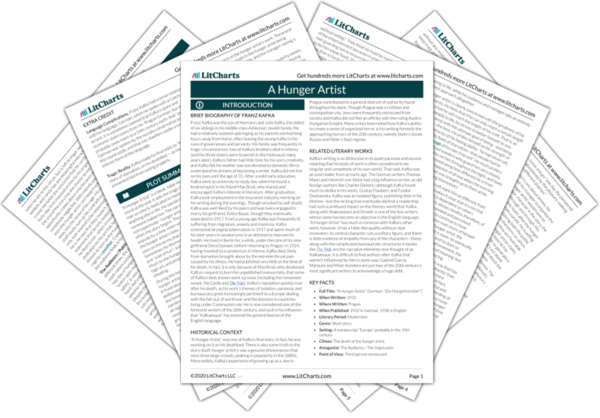Welcome to the LitCharts study guide on Franz Kafka's A Hunger Artist. Created by the original team behind SparkNotes, LitCharts are the world's best literature guides.
A Hunger Artist: Introduction
A Hunger Artist: Plot Summary
A Hunger Artist: Detailed Summary & Analysis
A Hunger Artist: Themes
A Hunger Artist: Quotes
A Hunger Artist: Characters
A Hunger Artist: Symbols
A Hunger Artist: Theme Wheel
Brief Biography of Franz Kafka

Historical Context of A Hunger Artist
Other Books Related to A Hunger Artist
- Full Title: "A Hunger Artist" (German: "Ein Hungerkünstler")
- When Written: 1922
- Where Written: Prague
- When Published: 1922 in German, 1938 in English
- Literary Period: Modernism
- Genre: Short story
- Setting: A nondescript “Europe”, probably in the 19th century
- Climax: The death of the hunger artist
- Antagonist: The Audience / The Impresario
- Point of View: Third-person omniscient
Extra Credit for A Hunger Artist
Language Complications. Franz Kafka had a tense relationship with his language, German, which he spoke with a Czech accent. It is sometimes claimed that Kafka’s spare and economic style comes from his ‘Prague German’, but this probably owes more to a 19th century myth: that “proper” German was spoken by the socially conservative population of the countryside, and that city-dwellers spoke a corrupted and inferior form of the language.
Tragic Reality. Kafka made his final edits to “A Hunger Artist”, a story of starvation, on his deathbed — as his tuberculosis prevented him from eating properly.







